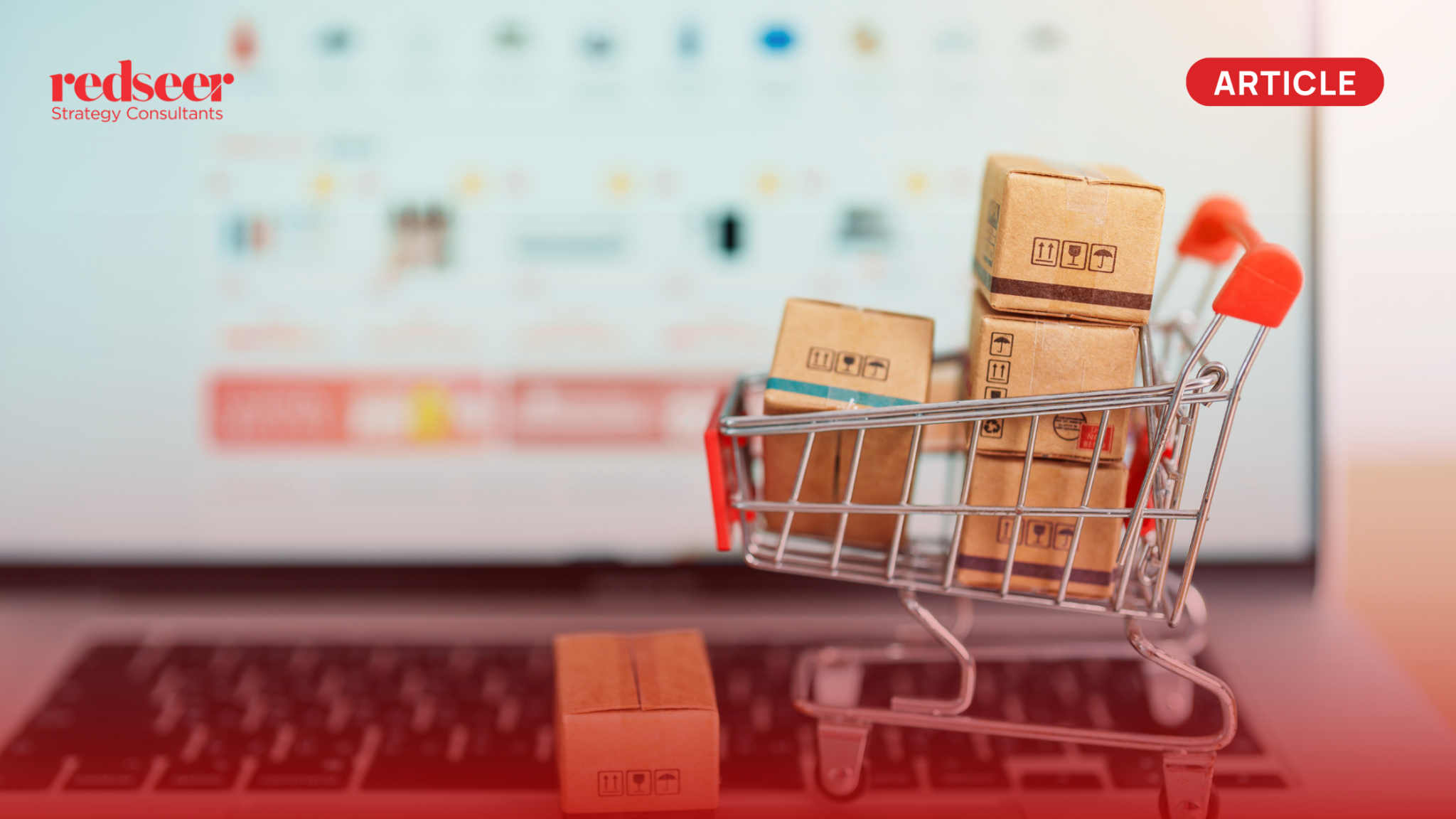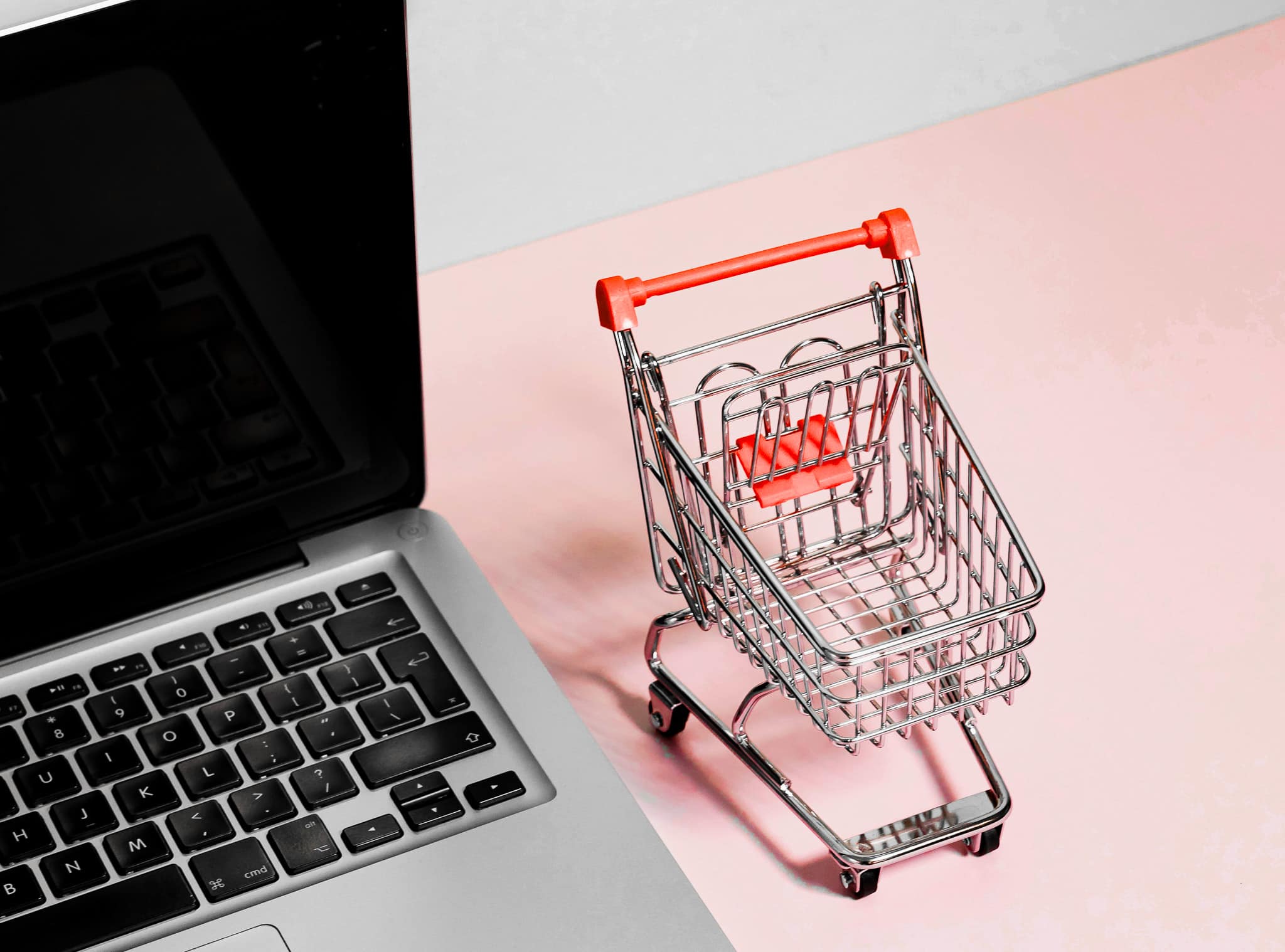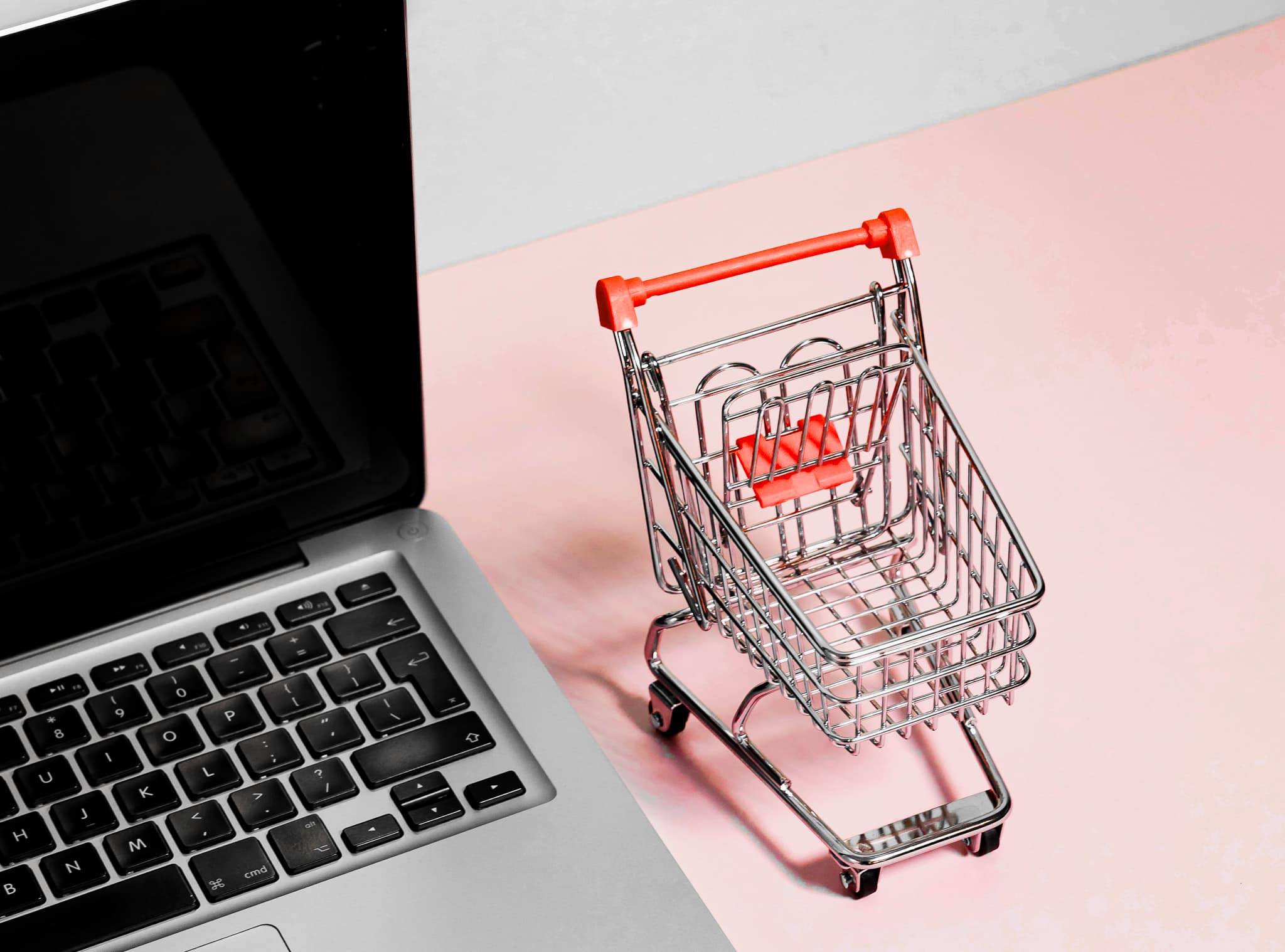eGrocery was a category that exhibited minimal growth through the previous decade until a recent watershed event came to be – the COVID-19 pandemic. With social distancing norms in place, people across multiple geographies switched to quick commerce and slotted deliveries for the convenience and reliability they offered. This fastest-growing subset of eTailing has seen significant uptake in Metros, Tier-1 and Tier-2 cities with immense scope for further expansion nationwide.
Although this paints a picture of promise, the eGrocery user base continues to remain small owing to multiple factors. A sizeable demographic of digital non-natives or conventional offline buyers who have historically validated product quality through physical proof are yet to join the fold. This, coupled with logistical and product variety gaps make the sector’s growth story one to watch out for.
Almost 80% of digital non-natives are satisfied with their local grocery shopping options
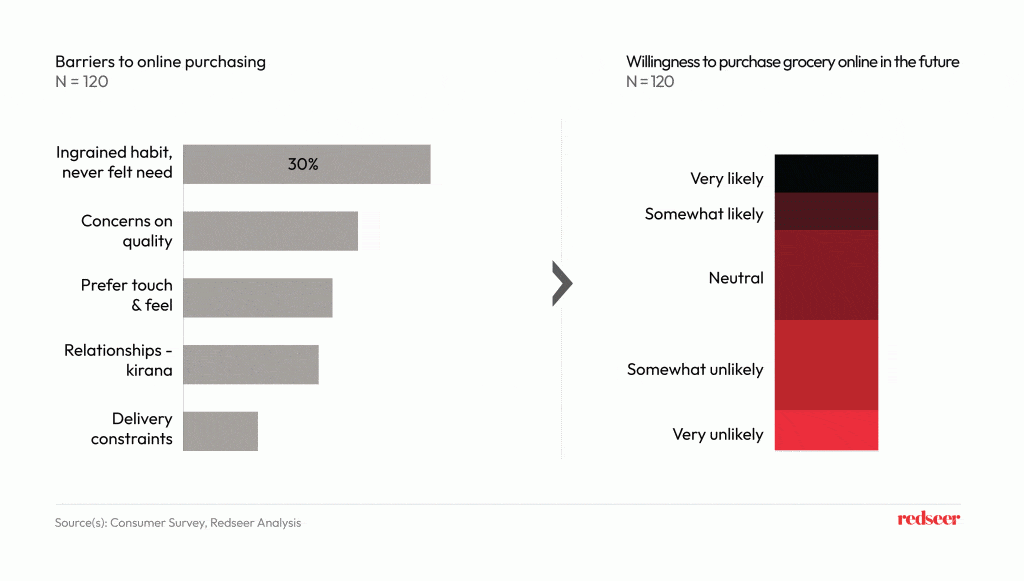
For many, buying from their local Kirana stores is an ingrained habit they don’t see the need to change. Moreover, these offline buyers prefer the touch and feel of the products being purchased to feel assured about the quality—an experience that’s not available when shopping online. Various delivery constraints on the last mile also add to the reluctance of offline shoppers availing eGrocery facilities.
While eGrocery is amongst the fastest growing eTailing categories, its user base has been small
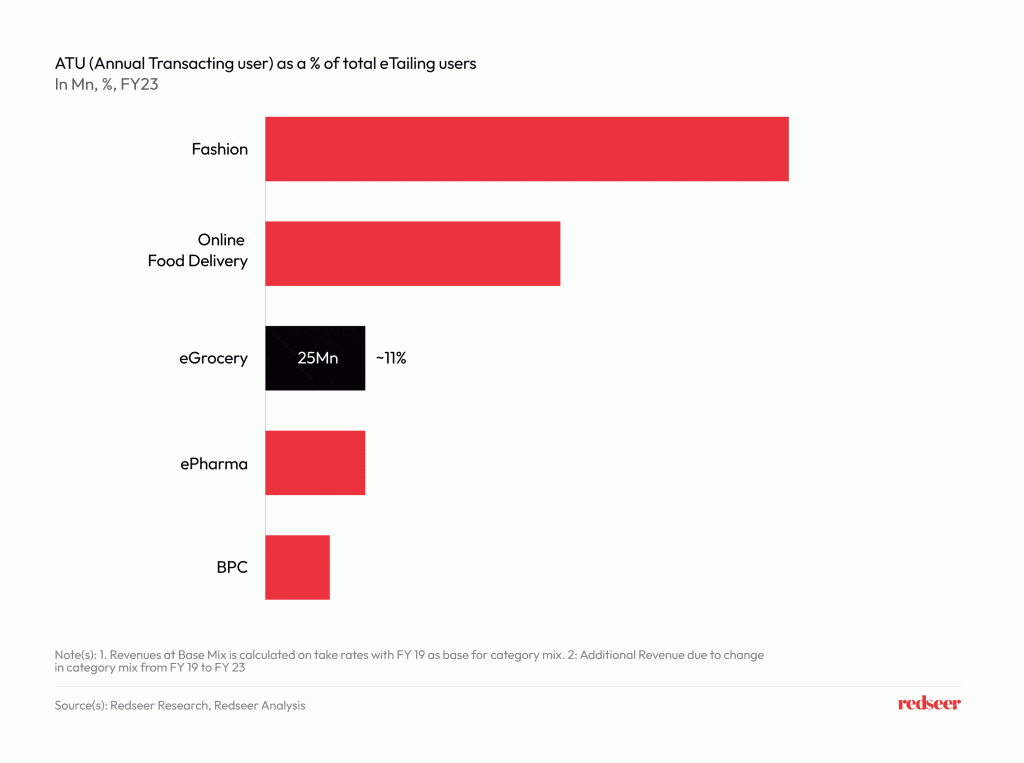
Of the total number of eTailing users in India, only about 11%, or 25 million people were annual transacting users of eGrocery as of FY23. Players now have an opportunity to acquire new users as ~40% of the non-eGrocery users are not even aware of the online grocery options available in their area.
Some of the significant gaps that can move the needle for eGrocery are product variety and last mile concerns
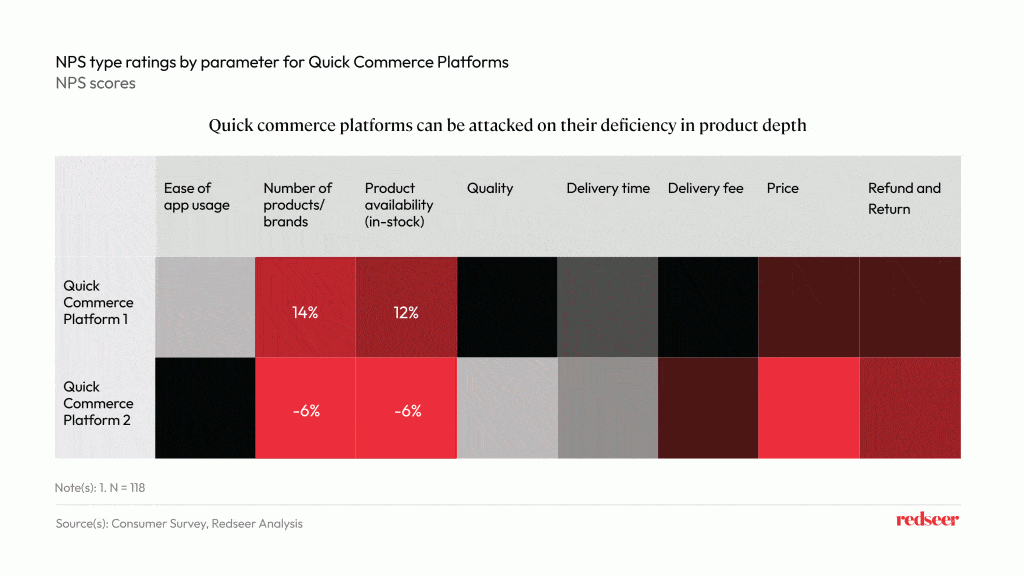
Despite the rapid growth of quick commerce in Metro and Tier-1 cities, product selection and availability are challenges that platforms need to solve to improve consumer satisfaction. This deficiency in product depth is where quick commerce platforms can be attacked to encourage wider adoption rates among new users. Various delivery constraints on the last mile also add to the reluctance of offline shoppers converting to eGrocery.
However, with effective solutioning, eGrocery stands out as one of the rapidly expanding eTailing categories both annually and quarterly

Looking closely at the CAGR in GMV across eTailing categories, eGrocery had the highest growth rate at 64% since FY19. COVID acted as a catalyst in boosting the adoption of eGrocery in major cities with stricter lockdown protocols. Eventually, as more consumers got accustomed to the convenience of having essentials delivered at their doorstep, eGrocery maintained its demand and growth both at the annual and quarterly level.
Finally, eGrocery players have an opportunity to acquire new users as ~40% of the non-eGrocery users are not even aware of online grocery options available in their area. Solving the key challenges associated with this cohort also presents an opportunity to convert those who are on the fence about shopping groceries online.



